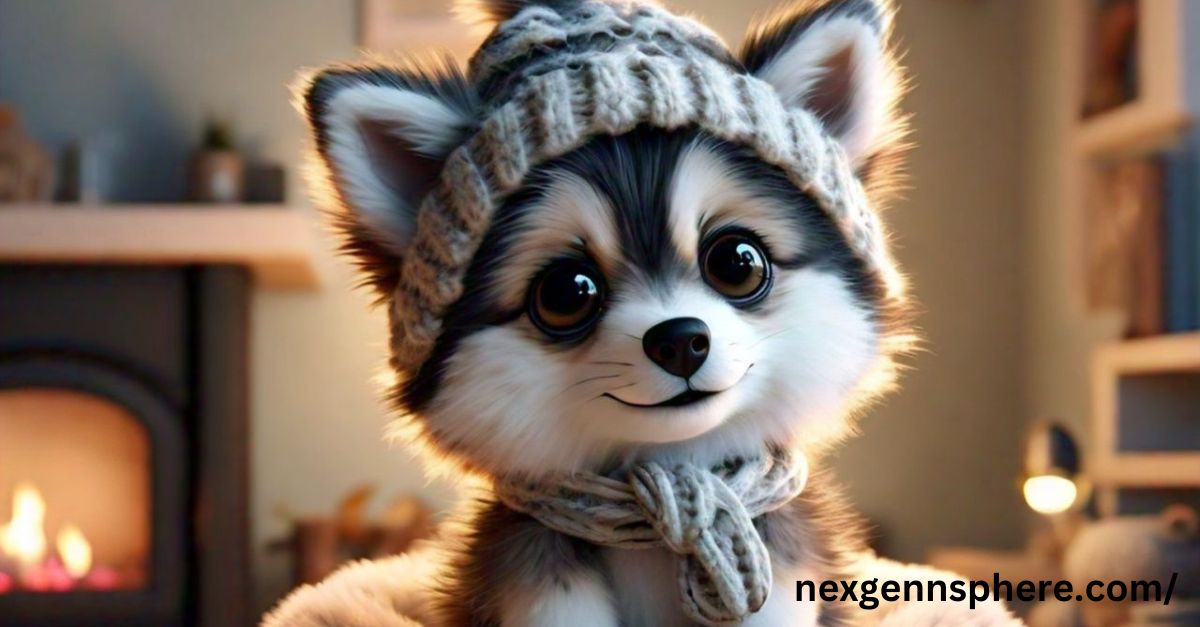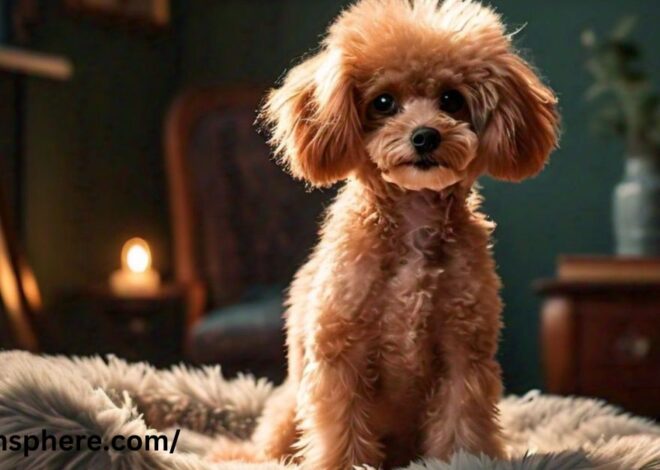
Pomsky: Everything you need to know in 2024
Introduction
What is a Pomsky?
If you’ve ever dreamed of having a dog that’s as playful as a Pomeranian and as majestic as a Husky, then the Pomsky might be your perfect match. A Pomsky is a crossbreed between a Siberian Husky and a Pomeranian. This hybrid breed has been gaining popularity for its adorable looks and charming personality, making it a sought-after pet for dog lovers.
Popularity of Pomskies
Pomskies have skyrocketed in popularity over the past decade, largely due to their irresistible appearance and engaging temperament. With their fluffy coats, striking eyes, and energetic demeanor, Pomskies have carved out a niche as one of the most desirable designer breeds.
Origins of the Pomsky
History of the Pomsky Breed
The Pomsky is a relatively new breed, with its origins tracing back to the early 2010s. Breeders aimed to combine the best traits of the Siberian Husky and the Pomeranian to create a dog that possessed the beauty of a Husky but in a smaller, more manageable size.
Husky and Pomeranian: The Parent Breeds
To understand the Pomsky, it’s essential to know a bit about its parent breeds. The Siberian Husky is known for its endurance, intelligence, and striking blue eyes. Pomeranians, on the other hand, are tiny, spirited, and have a luxurious double coat. The Pomsky inherits a mix of these traits, resulting in a unique and lovable dog.
Physical Characteristics of a Pomsky
Size and Weight
Pomskies vary in size, typically weighing between 20 to 30 pounds and standing about 10 to 15 inches tall. Their size can differ based on the genetics they inherit from their parents.
Coat and Colors
One of the most appealing features of Pomskies is their beautiful coats. They can come in a variety of colors, including black, white, gray, brown, and a mix of these. Their fur is usually thick and fluffy, often resembling the Husky’s coat but in a smaller frame.
Distinctive Features
Pomskies often have the striking, almond-shaped eyes of Huskies, which can be blue, brown, or even one of each. Their ears are typically pointed and erect, and they have a fox-like face that adds to their charm.
Personality and Temperament
General Disposition
Pomskies are known for their friendly and playful nature. They are intelligent, curious, and enjoy being the center of attention. Their high energy levels mean they love to play and engage in activities.
Interaction with Families and Children
Pomskies are great family pets. They are affectionate and get along well with children, making them excellent companions for active households. Their playful nature makes them particularly popular with kids.
Interaction with Other Pets
Pomskies generally get along well with other pets if they are socialized from a young age. Their friendly disposition means they can coexist peacefully with other dogs and even cats, provided they are introduced properly.
Training a Pomsky
Basic Training Tips
Training a Pomsky requires patience and consistency. Start with basic commands like sit, stay, and come. Positive reinforcement techniques, such as treats and praise, work best with this intelligent breed.
Socialization
Early socialization is crucial for Pomskies. Expose them to different people, environments, and other animals to help them grow into well-rounded adults. Socialization helps prevent behavioral issues and ensures your Pomsky is confident in various situations.
Potty Training
Potty training a Pomsky can be challenging due to their small size and high energy. Consistency is key. Establish a regular routine and take your Pomsky outside frequently. Reward them when they go in the right place to reinforce good behavior.
Exercise Needs
Daily Exercise Requirements
Pomskies are energetic and require regular exercise to keep them happy and healthy. Aim for at least 30 to 60 minutes of exercise daily, which can include walks, playtime, and interactive games.
Suitable Activities
Pomskies enjoy a variety of activities, from fetching and running to agility training and puzzle toys. These activities not only provide physical exercise but also mental stimulation.
Mental Stimulation
Mental stimulation is just as important as physical exercise for Pomskies. Provide them with puzzle toys, training sessions, and new experiences to keep their minds engaged and prevent boredom.
Diet and Nutrition
Ideal Diet for Pomskies
A balanced diet is essential for a Pomsky’s health. Choose high-quality dog food that meets their nutritional needs. Look for food rich in protein, healthy fats, and essential vitamins and minerals.
Feeding Schedule
Pomskies typically do well with two meals a day. Ensure the portions are appropriate for their size and activity level to maintain a healthy weight.
Foods to Avoid
Avoid feeding your Pomsky foods that are toxic to dogs, such as chocolate, grapes, onions, and garlic. Also, steer clear of overly processed foods and those with artificial additives.
Grooming and Maintenance
Coat Care
Pomskies have thick, double coats that require regular grooming. Brush their fur at least twice a week to prevent matting and reduce shedding. During shedding seasons, more frequent brushing may be necessary.
Dental Hygiene
Dental care is important for Pomskies. Brush their teeth regularly to prevent tartar buildup and dental issues. Dental chews and regular vet check-ups can also help maintain oral health.
Nail Trimming
Regular nail trimming is essential to prevent overgrown nails, which can cause discomfort and health problems. Trim your Pomsky’s nails every few weeks, or as needed.
Health and Wellness
Common Health Issues
Pomskies can be prone to certain health issues inherited from their parent breeds, such as hip dysplasia, eye conditions, and dental problems. Regular vet check-ups are crucial to catch and manage any health concerns early.
Regular Vet Check-Ups
Schedule regular vet visits for your Pomsky to ensure they stay healthy. Your vet can provide vaccinations, preventative care, and advice on diet and exercise.
Vaccinations and Preventative Care
Keep your Pomsky up to date with vaccinations and preventative treatments for fleas, ticks, and heartworms. Preventative care is key to maintaining their overall health.
Living Conditions
Best Home Environment
Pomskies adapt well to various living environments, whether it’s an apartment or a house with a yard. The key is to provide them with enough exercise and mental stimulation regardless of the living space.
Indoor vs. Outdoor Living
Pomskies are best suited to indoor living due to their small size and desire to be close to their families. However, they enjoy outdoor playtime and activities, especially in a secure, fenced area.
Adapting to Different Climates
Pomskies can adapt to different climates, but they are more comfortable in cooler temperatures due to their thick coats. In hot weather, ensure they have plenty of water and shade, and avoid vigorous activities during the hottest parts of the day.
Pomsky Puppy Care
Choosing a Pomsky Puppy
When choosing a Pomsky puppy, look for reputable breeders who prioritize health and temperament. Ensure the puppies are
raised in a clean, healthy environment and have been socialized from a young age. Ask for health clearances for the parents to avoid potential genetic issues.
Early Puppy Care
Early care for a Pomsky puppy involves setting up a comfortable living space, providing proper nutrition, and beginning basic training. It’s important to start socializing them immediately to help them adapt to various environments and people.
Socializing Puppies
Introduce your Pomsky puppy to different people, pets, and experiences in a controlled manner. This helps them grow into well-adjusted adults who are confident and well-behaved.
Adopting a Pomsky
Finding a Reputable Breeder
A reputable breeder will provide a healthy, well-socialized Pomsky puppy. Look for breeders who are transparent about their breeding practices and can provide health clearances for the puppies and their parents.
Adoption vs. Buying
Consider adopting a Pomsky from a rescue organization or shelter. Many Pomskies need homes, and adoption can be a rewarding experience. However, if you choose to buy, ensure you’re purchasing from a responsible breeder.
Rescue Organizations
Several rescue organizations specialize in rehoming Pomskies and other mixed breeds. These organizations can be a great resource for finding a Pomsky in need of a loving home.
Pomsky Myths and Facts
Common Misconceptions
There are several myths about Pomskies, such as the idea that they are hypoallergenic or that they stay small forever. It’s important to have realistic expectations about the breed to ensure you are prepared for their needs.
Interesting Facts
Pomskies are known for their intelligence and ability to learn tricks quickly. They also have a playful, mischievous side that keeps their owners entertained. Despite their small size, they often retain the Husky’s adventurous spirit.
Cost of Owning a Pomsky
Initial Costs
The initial cost of owning a Pomsky includes the purchase price, which can range from $1,000 to $5,000 depending on the breeder and lineage. Additional initial costs include vaccinations, spaying/neutering, and basic supplies like a bed, leash, and toys.
Ongoing Expenses
Ongoing expenses for a Pomsky include high-quality food, regular vet visits, grooming supplies, and pet insurance. Budgeting for these costs is important to ensure you can provide the best care for your pet.
Budgeting for Emergencies
It’s wise to set aside an emergency fund for unexpected veterinary bills. Pet insurance can also help cover the cost of accidents or illnesses, providing peace of mind.
Conclusion
Summary of Key Points
Pomskies are a delightful blend of the Siberian Husky and the Pomeranian, offering the best traits of both breeds. They are known for their striking looks, friendly personalities, and high energy levels. Caring for a Pomsky involves providing regular exercise, a balanced diet, and consistent grooming. Early socialization and training are essential to ensure they grow into well-behaved adults. Whether you choose to adopt or buy, make sure to find a reputable source and be prepared for the financial commitment of owning a Pomsky.
Why a Pomsky Might Be Right for You
If you’re looking for a dog that combines beauty, brains, and a playful spirit, the Pomsky could be the perfect fit. Their small size and adaptable nature make them suitable for various living situations, while their affectionate temperament makes them wonderful companions. With the right care and attention, a Pomsky can bring joy and excitement to your life for many years.
Also read: Toy poodle
FAQs
How big do Pomskies get?
Pomskies typically weigh between 20 to 30 pounds and stand about 10 to 15 inches tall, though their size can vary depending on their genetic makeup.
Are Pomskies good with kids?
Yes, Pomskies are generally good with children. They are playful and affectionate, making them great companions for active families. However, it’s important to supervise interactions with very young children.
Do Pomskies shed a lot?
Yes, Pomskies can shed quite a bit due to their thick, double coats. Regular brushing can help manage shedding and keep their coat healthy.
How much exercise does a Pomsky need?
Pomskies need at least 30 to 60 minutes of exercise daily. This can include walks, playtime, and interactive games to keep them physically and mentally stimulated.
What is the lifespan of a Pomsky?
Pomskies generally have a lifespan of 12 to 15 years, provided they receive proper care, a balanced diet, regular exercise, and routine veterinary check-ups.


